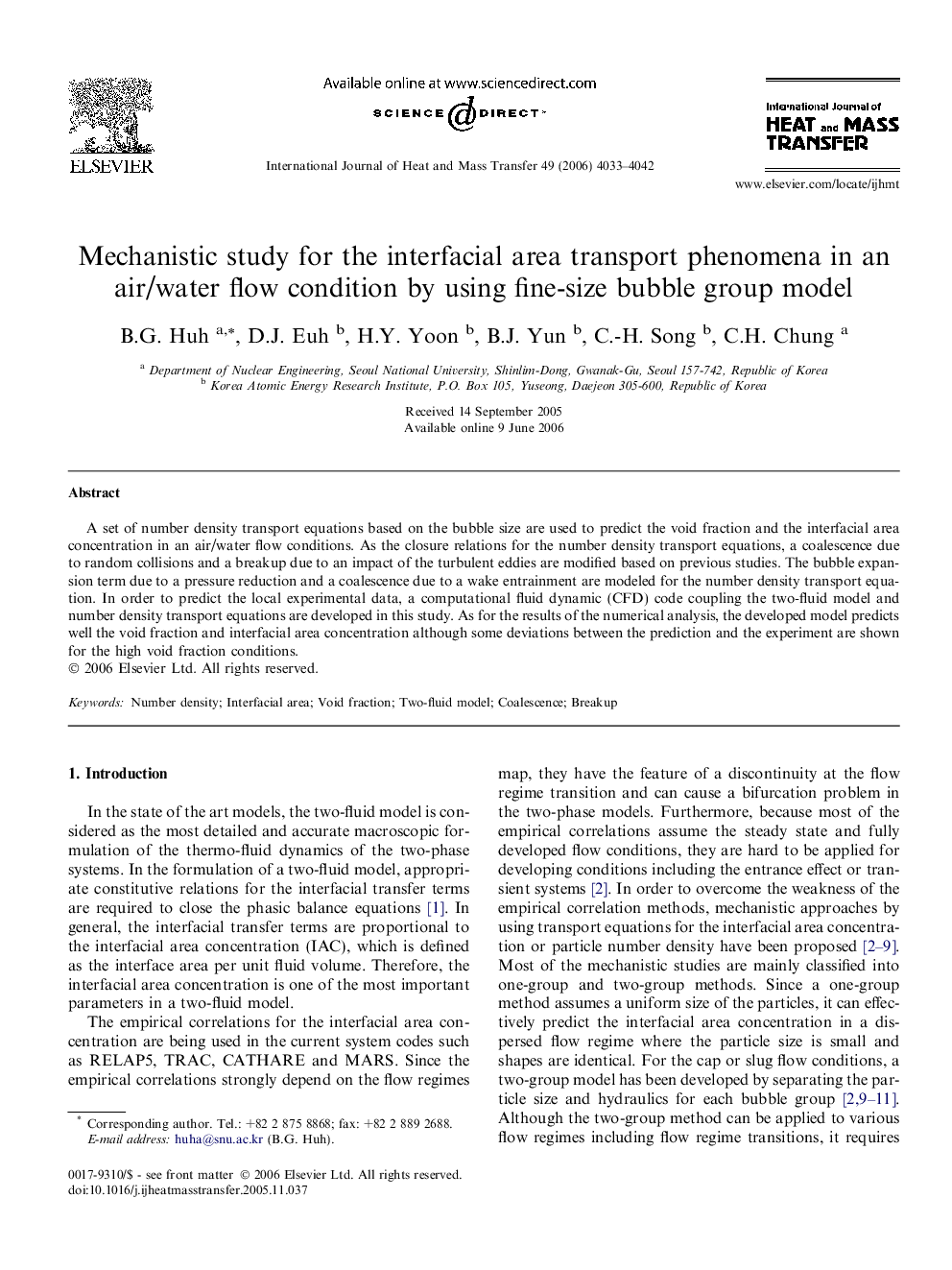| Article ID | Journal | Published Year | Pages | File Type |
|---|---|---|---|---|
| 661635 | International Journal of Heat and Mass Transfer | 2006 | 10 Pages |
A set of number density transport equations based on the bubble size are used to predict the void fraction and the interfacial area concentration in an air/water flow conditions. As the closure relations for the number density transport equations, a coalescence due to random collisions and a breakup due to an impact of the turbulent eddies are modified based on previous studies. The bubble expansion term due to a pressure reduction and a coalescence due to a wake entrainment are modeled for the number density transport equation. In order to predict the local experimental data, a computational fluid dynamic (CFD) code coupling the two-fluid model and number density transport equations are developed in this study. As for the results of the numerical analysis, the developed model predicts well the void fraction and interfacial area concentration although some deviations between the prediction and the experiment are shown for the high void fraction conditions.
